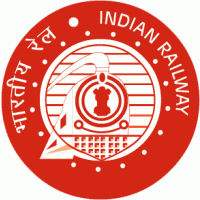The Fastest Train Service In India
As of 2010, India does not have any high-speed rail lines capable of supporting speeds of 200 km/h (125 mph) or more, and none is under construction or planned. However, there are some interest in introducing high-speed rail in India, with trains capable of 250 to 350 km/h.
Currently, the fastest rail in India is the Bhopal Shatabdi, which has a top speed of 150 km/h (93 mph). After years of being ridiculed because of its slow pace, and decades of being compared to China, the Indian Railways has delivered a fat punch to the critics.
The Indian Railways will construct ultra high speed routes on the Pune-Mumbai-Ahmedabad rail map for express bullet trains hurtling at speeds between 300 to 350 kmph.
China is hogging the limelight because it is currently building the world's fastest bullet train. The country has collaborated with Siemens to develop a bullet train from Beijing to Shanghai. The train will achieve speeds of 380kmph in its 1,318 km route.
 |
| Bullet Trains in India |
Now the downside - it would take Rs 74,400 crore to build a rail line between Pune and Mumbai. That number is bigger than the Railways' entire estimated earning for 2008-09. And to build the line between Mumbai and Ahmedabad it would cost Rs 3,55,300 Crore. Start saving from today if you want to travel faster.
The Indian Ministry of Railways' white-paper Vision 2020 submitted to Indian Parliament by Railway Minister Mamata Banerjee on December 18 2009 envisages the implementation of regional high-speed rail projects to provide services at 250-350 km/h, and planning for corridors connecting commercial, tourist and pilgrimage hubs. Six corridors have already been identified for technical studies on setting up of high-speed rail corridors: Delhi-Chandigarh-Amritsar,Pune-Mumbai-Ahmedabad,Hyderabad-Vijayawada-Chennai,Howrah-Haldia, Chennai-Bangalore-Coimbatore-Ernakulam, Delhi-Agra-Lucknow-Varanasi-Patna. These high-speed rail corridors will be built as elevated corridors in keeping with the pattern of habitation and the constraint of land.
During Indian Prime Minister Manmohan Singh's visit to Tokyo in December 2006, Japan assured cooperation to India in creating a high speed link between New Delhi and Mumbai. In January 2009, the then Railway Minister Lalu Prasad expressed keen interest in introducing bullet-trains in India. "The day is not far off when the bullet train will run in the country" Prasad had said after getting a first-hand feel of the superfast trains travelling from Tokyo to Kyoto at a speed of about 300 km/h On a visit to India in December 2009, Japanese Prime Minister Yukio Hatoyama offered bullet-train technology to India. "Since its inception (in Japan), there has been no accidents. We will like to see this technology being used in India”, said Hatoyama. The proposal is under discussion, according to official sources. The Indian Rail official sources said 2,000 km of route for the high speed passenger rail corridor is being planned in the next ten years. Feasibility studies for Pune-Mumbai-Ahmedabad high speed passenger corridor are nearing completion.

No comments:
Post a Comment